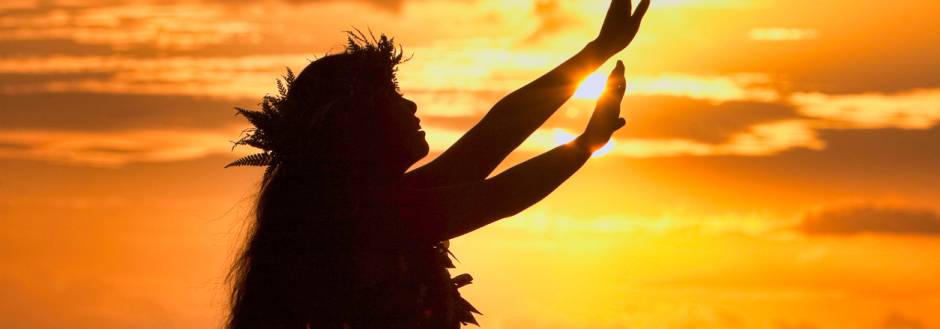The mesmerizing hula dance you see performed on the islands of Hawaii today has a long history rooted in traditional culture. Most visitors will see hula at a luau or a special event. (Paradise Cove Luau near Ko Olina Resort is one of the best in Hawaii!) Hula is such a part of Hawaii that it might be surprising to learn there was a time when hula was in danger of disappearing from the islands. The history of hula is the history of Hawaii.
Before the Hawaiian people had a written language, they told stories through chants and dance. The chants, or oli, told stories about myths, births, deaths, love, prayers, battles, or rituals. Oli was considered sacred. There are many different styles of chanting, used for different purposes depending on the topic of the chant. Dancers had simple movements that accompanied these chants. The focus was on the chants, but the hula choreography was part of the storytelling — a big part of Hawaiian culture.
When the first Europeans came to Hawaii in 1778, they noted the hula, and this is the first written record of it. British explorer Capt. James Cook wrote about seeing women dancing on Kauai. Men danced, too, however. The strongest men dancers were trained as warriors.
With the Europeans came traders and Christian missionaries. Queen Ka’ahumanu converted to Christianity and, deeming hula a pagan ritual, banned hula in public places in 1830. After she died a couple years later, though, people ignored this rule. When Kalakaua became king in 1874, he officially declared that hula could be performed in public again.
Around the end of the 19th Century, though, Hawaii and its culture faced more troubles. A group of American businessmen took over Hawaii in 1893 and overthrew Queen Liliuokalani, and before long native Hawaiian language was banned from being taught. Even though the language was banned, hula was not, and the focus of hula shifted from the chants to the dancers. Hawaii became an American state in 1959, and shortly afterward, people became interested in hula and traditional culture again. Today, schoolchildren can learn Hawaiian in language immersion schools. As more islanders become fluent in the native language, the focus of hula may shift back to the chants again.
That leads to the point that there are two forms of hula. Hula Kahiko is the way hula was traditionally performed, accompanied by rhythm instruments like sticks and drums. Hula ‘Auana combines hula choreography with more modern or Western styles of music and instruments like the ukulele and steel guitar. These different sides of hula also affect the ways dancers dress, with Hula Kahiko using more traditional regalia.
Hula is “aloha in action,” and a vital part of Hawaiian culture. Be sure to see a hula performance while you are vacationing on Oahu.




